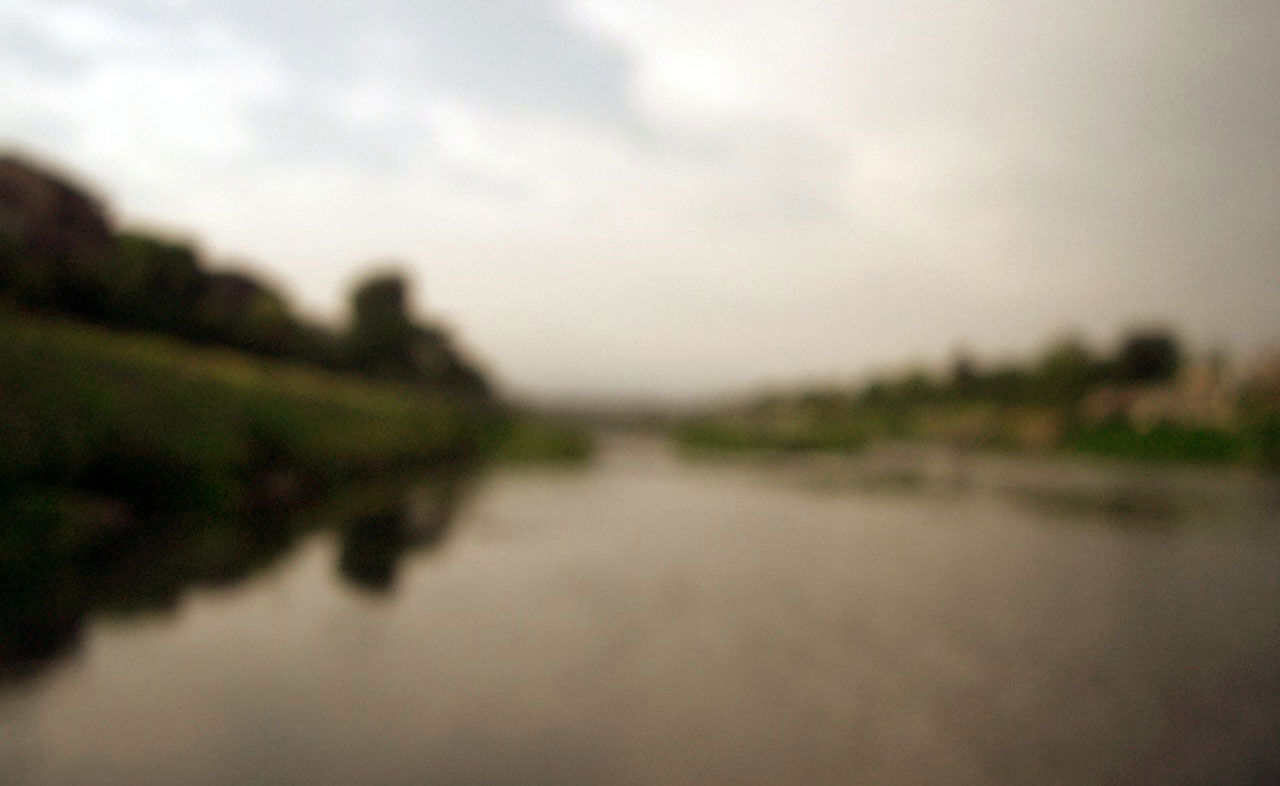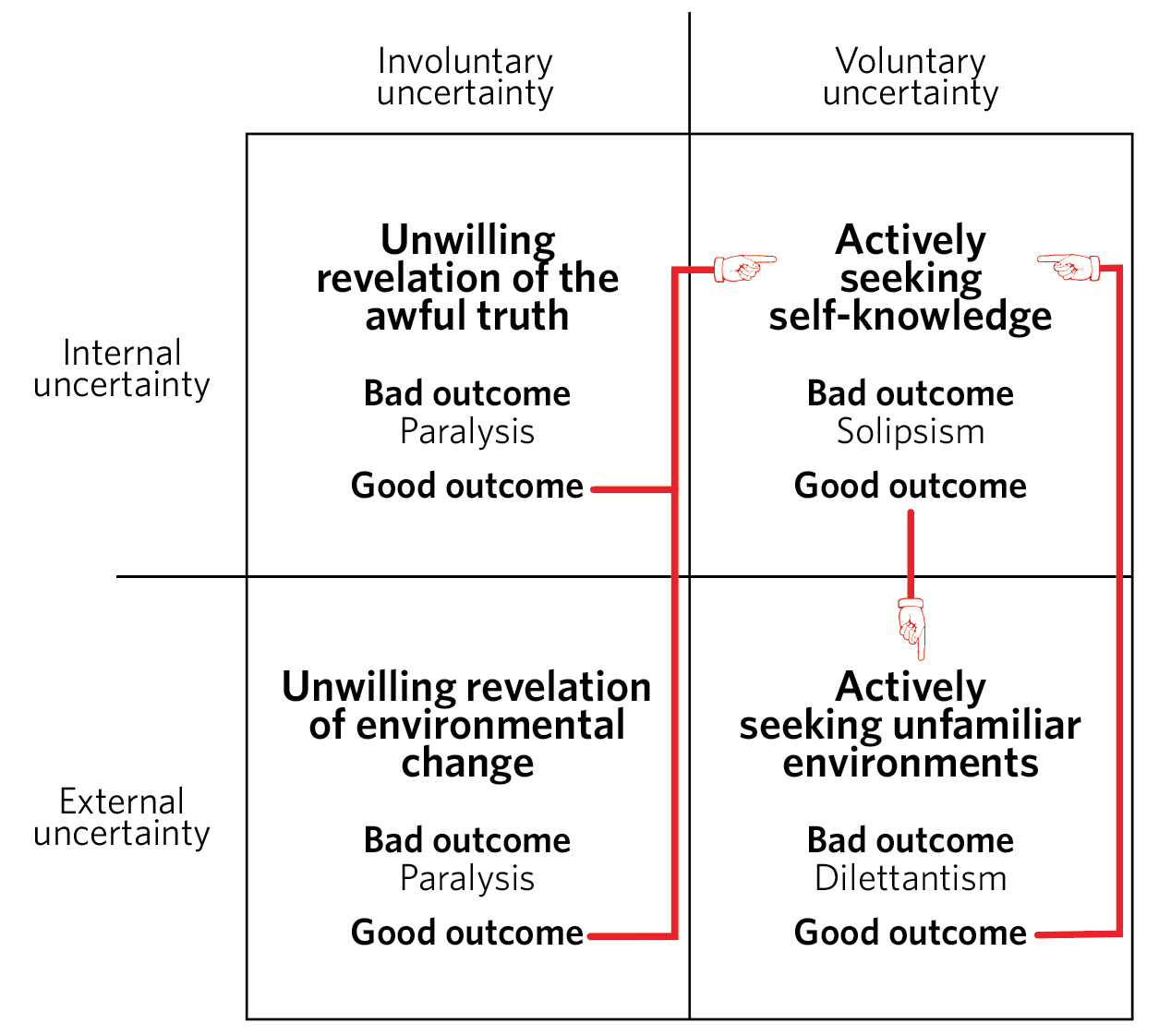TT Journal, Vol.1, ISSUE 1, 3rd November 2020

During the early days of lockdown in London, I had many opportunities to reflect on my life choices. Or, more accurately, on how intertwined my life choices have been with events that imposed themselves on me.
I worked at Google between 2005 and 2008. While I was there, I spent a lot of time on what one of my colleagues at the time charitably called “fun stuff that doesn’t get you promoted.” I helped organize a speaker series, connected non-profits and public interest organizations with Google resources, etc. The two common threads through these projects were that they were all time-consuming, and none of them contributed visibly or meaningfully to my immediate management hierarchy’s bottom line or key objectives.
About two years into working there, one of my mentors told me that “you probably don’t realize that all these other things you’re doing make you appear to not be very good at your real job. You might want to think about whether this is the right fit for you.” Devastating.
(Back then, I had not yet developed the ability to convince the organization of the importance of things I wanted to do. In fact, I didn’t even realize it was important to do this. I still haven’t learned how to do this well, but I’ve definitely learned that it’s important.)
We tell ourselves stories about ourselves to make sense of what we are doing and why we are doing it. My story at Google was probably something like “I’m working on a lot of forward-thinking projects which will add more value to the organization than bean-counting work with clear but trivial outcomes.”
Stories like these are important.
“It is a somewhat shattering moment,” Jim Harrison writes, “when we realize that our lives are made up of the particulars of what we do every day.” The stories we tell ourselves about why we do everyday things are literally how we give our lives meaning. Sometimes, these stories are unconvincing to anyone but ourselves (= delusion). And we sometimes accidentally run across information that shakes that sense of meaning to the very core.
My mentor’s brutally frank comment knocked the foundations out from under how I made sense of my so-called professional self. It plunged me into deep uncertainty.
Soon after, someone else at Google gave me a copy of Herminia Ibarra’s Working Identity. This terrifying book is stuffed with accounts of how (among other things) personal stories can delude people into a lifetime of unhappiness. In my state of existential crisis, reading the book sent me on a vision quest to find a new way to make sense of my life. I left Google within months.
My Google departure story illustrates two cells in what I’m coming to think of as one—of many—useful ways to divide the world of uncertainty as it affects individuals.

One clear division is that uncertainty can be involuntary or voluntary: it can either be revealed to you against your will or you can actively search for and discover it. Another clear division is that uncertainty can be internal or external: it can either be about your individual sense of self or about how well that sense of self fits with your environment.
These two divisions intersect to produce four types of personal uncertainty—each of which has the potential for either good or bad outcomes.
- Involuntary internal uncertainty: Unwilling revelation of the awful truth. When someone or something shows you that you’re deluding yourself about what you’re good at and why you exist. A bad outcome is paralysis or depression because your life suddenly loses meaning and motivation. A good outcome is that the involuntary revelation and resulting massive crisis washes away your delusional self-confidence and moves you to engage in voluntary internal uncertainty.
- Voluntary internal uncertainty: Actively seeking self-knowledge. When you choose to engage in the uncomfortable process of interrogating what you’re good at and why you exist. This search invariably leads to discovering new ways of making sense of the self. A bad outcome is developing a unremitting and annoying obsession with personal exploration and self-discovery. A good outcome is finding out a new way of conceiving of your identity that triggers voluntary external uncertainty: the search for new environments in which that identity might make more sense.
- Involuntary external uncertainty: Unwilling revelation of environmental change. When your current environment changes in a way that makes it clear that what you were good at before is now invalid. For instance, working as the print advertising specialist at a paper-only newspaper company where the ad revenue is dropping every quarter due to encroachment from online ad platforms. Basically, your competency remains unchanged but the environment is telling you that your value is declining precipitously. This can lead to paralysis, driven by the usually erroneous belief that you have no other options. A good outcome is that this finally prompts you to search for something new and more rewarding to do by engaging in some voluntary internal uncertainty.
- Voluntary external uncertainty: Actively seeking unfamiliar environments. When you intentionally put yourself into unfamiliar situations to investigate whether they are more personally fruitful and fulfilling. For instance, quitting a well-paying job you hate (perhaps as an overworked law firm senior associate) to enter a new industry at a comparatively low level (perhaps as a junior investment manager in a litigation funder). Entering a new environment means having to repurpose your resources or build new ones and learn new rules of the game. This is uncomfortable and prone to failure on the one hand—but on the other hand can also lead you to satisfaction and fulfilment that would have been impossible outside of the new environment. One danger here is trying too many new environments because you give up without investing enough time and effort in evaluating each one. A good outcome is when being exposed to the demands of new environments shows you that there are other potentially attractive and fulfilling selves to construct, thus leading you to engage in voluntary internal uncertainty.

Breaking up uncertainty like this offers a pair of insights and maybe-principles:
- If exposed to involuntary uncertainty, it’s probably better to take some action than to avoid it. The bad outcomes for the involuntary forms of uncertainty are both governed by inaction despite external signs that change is needed. On the other hand, the good outcomes both kick you out of a likely suboptimal routine and drive you to take control of uncertainty by investing in self-knowledge—taking action gives you access to the silver lining of involuntary uncertainty.
- Before voluntarily pursuing uncertainty, create mechanisms to pull you back before you go over the edge. (This was Odysseus’s strategy when approaching the island of the Sirens—but you can replace the earplugs and being tied to the mast with a few mentors you trust or even a checklist.) The bad outcomes for the voluntary forms of uncertainty are both governed by overdoing it. Solipsism and dilettantism result from going overboard. If you can avoid those pitfalls, the voluntary forms of uncertainty can create a cycle of mutually reinforcing internal and external exploration—balance leads to a virtuous cycle of learning and adaptation.
The virtuous learning cycle that can result from voluntarily pursuing uncertainty is pretty much exactly what corporations and universities say they want employees and students to develop. Yet corporations and universities continue to build institutional structures that artificially conceal uncertainty and disincentivize the voluntary pursuit of uncertainty (such as overly clearly structured career paths and clearly defined pathways through academic majors).
After spending long enough in such settings, it becomes much easier to simply retreat to what is well-known and clearly understood. Even the idea of actively seeking out uncertainty becomes nearly inconceivably challenging, let alone actually doing it. The result: fragility when uncertainty is revealed and is undeniable.
This is doubly unfortunate. First, because the decision to engage in voluntary uncertainty (whether internal or external) is probably the biggest psychological hurdle. After that decision is made, the uncertainty you face is only what you choose to face. Second, because systematically avoiding uncertainty means fewer opportunities to build and test the personal infrastructures (such as a trusted balance network) that make uncertainty more likely to be productive.
Uncertainty will always be uncomfortable and expensive. Choosing to engage in voluntary uncertainty offers the chance to confront it on your own terms—at a level you can manage, at a moment that is more likely to be optimal, and when you have the resources to absorb the cost—and (possibly) to enter a state of productive internal and external exploration.

Vaughn Tan is a consultant, author, and assistant professor at University College London. He’s the author of The Uncertainty Mindset: Innovation Insights from the Frontiers of Food, which uses stories from internationally renowned teams at the Fat Duck, Noma, the Cooking Lab, and ThinkFoodGroup to explain how to build innovative organizations that are resilient to unpredictable change. Previously, he worked on ads, maps, spaceflight, and structured data at Google and on wood at Anderson Ranch. This short essay is adapted from an issue of his free newsletter. You can find him on the internet at www.vaughntan.org, on Twitter @vaughn_tan, and on Instagram @vaughn.tan.
